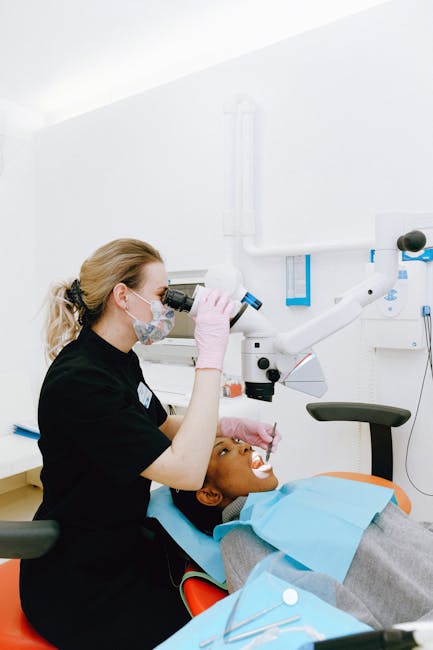Digital Rectal Exam (DRE): A Comprehensive Guide for Patients
What is a Digital Rectal Exam (DRE)?
A digital rectal exam (DRE) is a common physical examination procedure performed by healthcare professionals, primarily doctors and nurse practitioners. It involves the insertion of a gloved, lubricated finger into the rectum to assess the condition of the rectum and nearby organs. While it might sound intimidating, it’s a relatively quick and painless procedure for most people, and plays a crucial role in diagnosing various medical conditions.
Why is a DRE Performed?
DREs are utilized for a wide range of reasons, primarily as a screening tool and for diagnosing specific conditions. Some of the most common reasons include:

- Prostate Cancer Screening in Men: This is perhaps the most well-known reason for a DRE. The doctor can palpate the prostate gland for abnormalities such as nodules or enlargement, which may indicate prostate cancer. It’s important to note that a DRE is not a definitive test for prostate cancer and is often used in conjunction with a Prostate-Specific Antigen (PSA) blood test.
- Assessing Rectal Bleeding: If a patient experiences rectal bleeding, a DRE can help identify the source, whether it’s hemorrhoids, fissures, polyps, or other rectal issues.
- Detecting Rectal Masses or Tumors: DRE can help detect any abnormal growths or masses in the rectum, which might be cancerous or benign.
- Evaluating Constipation or Bowel Obstruction: The doctor can assess the tone and consistency of the rectal muscles and check for any blockages or impacted stool.
- Assessing for Pelvic Masses or Organs: During a DRE, the doctor can also feel for any abnormalities in nearby organs such as the bladder, uterus, or ovaries (in women).
- Diagnosing Anal Fissures or Abscesses: The exam allows for the detection of painful fissures (tears) or abscesses in the anal area.
- Evaluating Anal Sphincter Tone: This assesses the strength and function of the muscles that control bowel movements. It can be important in diagnosing conditions affecting bowel control.
What Happens During a Digital Rectal Exam?
The procedure is typically straightforward and brief. Here’s a step-by-step overview:
- Preparation: You’ll be asked to either lie on your side with your knees drawn up to your chest (left lateral decubitus position), or you may be asked to bend over and rest your upper body on the examination table. The doctor will explain the procedure.
- Lubrication: The doctor will lubricate a gloved finger with a water-soluble lubricant to ensure comfortable insertion.
- Insertion: The doctor will gently insert their lubricated finger into the rectum.
- Palpation: The doctor will palpate (feel) the rectal wall and surrounding tissues for any abnormalities in size, texture, or consistency. This process allows the doctor to assess for masses, tenderness, or other irregularities.
- Examination: The doctor may also check for stool consistency and presence of blood.
- Conclusion: Once the examination is complete, the doctor will remove their finger, and the procedure is finished.
How Long Does a DRE Take?
A digital rectal exam usually takes only a few minutes to complete. The entire process, including preparation and explanation, typically lasts less than 10 minutes.

Is a DRE Painful?
For most people, a DRE is minimally uncomfortable rather than painful. The lubricant used significantly reduces any discomfort associated with the insertion of the finger. However, some patients may experience some mild discomfort or pressure. If you have significant concerns about pain, you should discuss them with your doctor before the procedure.
What are the Risks of a DRE?
The risks associated with a DRE are generally very low. However, there’s a small risk of minor bleeding or infection. These risks are minimized by using sterile gloves and lubricant. The use of proper aseptic techniques reduces these risks even further. It’s essential to inform your doctor of any concerns you may have.
Alternatives to a DRE
In some cases, alternative diagnostic methods might be used instead of or in conjunction with a DRE. These may include:
- Prostate-Specific Antigen (PSA) Blood Test: Measures the level of PSA in the blood, which can be elevated in prostate cancer.
- Transrectal Ultrasound (TRUS): Uses sound waves to create images of the prostate.
- Colonoscopy: A more invasive procedure used to visualize the entire colon and rectum.
- Sigmoidoscopy: A less invasive procedure than a colonoscopy which visualizes the sigmoid colon and rectum.
- Magnetic Resonance Imaging (MRI): Provides detailed images of the pelvic area.
- Computed Tomography (CT) Scan: Uses X-rays to produce detailed images of the pelvic area.
Preparing for a DRE
There is usually no special preparation needed for a DRE. However, your doctor might recommend that you empty your bladder beforehand. In certain cases, the doctor might also request a bowel preparation for a more thorough examination.

After a DRE
After the DRE, you can usually return to your normal activities. If there were any concerns about bleeding or infection, your doctor will provide specific instructions. In most cases, there are no special aftercare measures.
When to See a Doctor
If you experience any of the following symptoms, it’s important to consult your doctor for evaluation: rectal bleeding, changes in bowel habits, persistent abdominal pain, unexplained weight loss, or a lump or mass in the rectal area. These could warrant a DRE and further investigations.
Conclusion
A digital rectal exam is a valuable and relatively simple procedure that provides important information for the diagnosis and management of several medical conditions. While some individuals may feel apprehensive about the procedure, understanding the benefits and the process itself can alleviate anxiety and encourage open communication with your healthcare provider. Always discuss any concerns or questions you have with your doctor.
Disclaimer
This information is for educational purposes only and should not be considered medical advice. Always consult with your healthcare provider before making any decisions related to your health or treatment.






